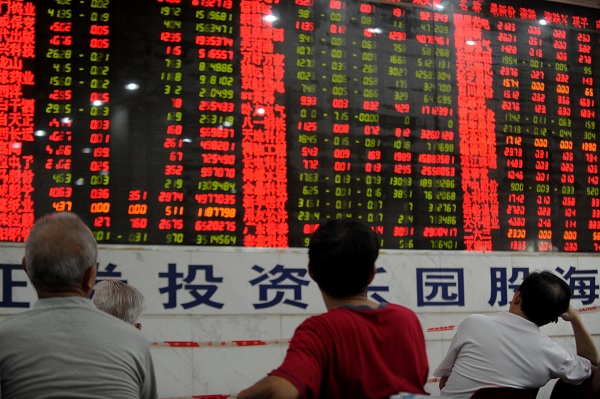
by admin | May 25, 2021 | Business, Large Enterprise
 New Delhi, (IANS) HSBC on Thursday announced closure of its 21 retail branches in India to reshape its business around digital capabilities.
New Delhi, (IANS) HSBC on Thursday announced closure of its 21 retail branches in India to reshape its business around digital capabilities.
The decision was taken as a part of the strategic review of its retail banking and wealth management (RBWM) business in India, the company said in a statement.
“The network will consolidate from 50 branches across 29 cities to 26 branches across 14 cities. This change reflects changes in customer behaviour, who are increasingly using digital channels for their banking,” it said.
HSBC said that in the consolidation process, most of the staff will be re-deployed and absorbed in various other departments.
The statement cited HSBC India group general manager and CEO Stuart P. Milne as saying that the move “aims to position our RBWM business for the future, with the right mix of digital versus physical branch distribution.”
“India is a priority market for HSBC and we will continue to invest to achieve
sustainable growth by supporting the needs of our customers,” it said.
“The consolidation of the branch network will take place over the coming months in a phased manner,” it added.
The branches being consolidated account for less than 10 percent of HSBC’s retail customer base in India, the company said.

by admin | May 25, 2021 | World
 Beijing:(IANS) The Chinese economy will pick up its pace in the second half of 2015 due to expected pro-growth measures despite recent market volatility, lacklustre manufacturing and the yuan’s depreciation, according to an HSBC forecast.
Beijing:(IANS) The Chinese economy will pick up its pace in the second half of 2015 due to expected pro-growth measures despite recent market volatility, lacklustre manufacturing and the yuan’s depreciation, according to an HSBC forecast.
Qu Hongbin, chief China economist of the London-based bank, wrote in a research note that the economy will be on track for a modest recovery during the rest of the year, after it slipped to its lowest level since the global financial crisis, Xinhua news agency reported.
“We maintain our full year GDP forecast at 7.1 percent,” said Qu. The Chinese economy grew at the slightly lower rate of 7 percent in the first half.
Recent weaker-than-expected factory activity has aroused worry about the economy. The Caixin flash China general manufacturing PMI retreated to 47.1 in August, the lowest reading since March 2009.
A plunging stock market and a weakening yuan added to fears that the government may be running out of policy options.
However, Qu believes policymakers still have sufficient ammunition on both the monetary and fiscal fronts to prop up the economy.
Given persistent corporate funding costs and a low base money growth level, there is ample room for the central bank to roll out more monetary easing measures, he said.
Qu expects the People’s Bank of China to cut interest rates by 25 basis points and slash the reserve requirement ratio by 200 basis points in the second half.
Similarly, fiscal policy also has room to be more supportive, Qu said, citing the current fiscal budget surplus, reforms in local government financing and policy banks’ re-capitalisation.
The untapped policy potential could put China at the top of the list of economies able to pull themselves out of deflation, without engaging in “beggar-thy-neighbour” competitive devaluation, Qu added.

by admin | May 25, 2021 | World
 Beijing:(IANS) China’s foreign trade dropped 7.3 percent year-on-year to 13.63 trillion yuan ($2.23 trillion) in the first seven months of 2015, official data showed on Saturday.
Beijing:(IANS) China’s foreign trade dropped 7.3 percent year-on-year to 13.63 trillion yuan ($2.23 trillion) in the first seven months of 2015, official data showed on Saturday.
Exports edged down by 0.9 percent from a year ago to 7.75 trillion yuan, while imports slumped by 14.6 percent to 5.88 trillion yuan, Xinhua cited data by the General Administration of Customs.
The trade surplus doubled to hit 1.87 trillion yuan in the January-July period.
In July, foreign trade decreased by 8.8 percent from the same period last year to 2.12 trillion yuan, with exports declining by 8.9 percent to 1.19 trillion yuan and imports falling by 8.6 percent to 930.2 billion yuan.
The trade surplus in July dropped by 10 percent to 263 billion yuan.
Qu Hongbin, chief China economist at HSBC, attributed the slump in export growth mainly to sluggish external demand, especially exports to the European Union (EU) and Japan.
Trade with the EU, China’s largest trade partner, slipped 7.6 percent year on year in the first seven months to 1.98 trillion yuan, with exports dropping by 4.4 percent to 1.22 trillion yuan and imports plunging by 12.4 percent to 757.32 billion yuan.
Trade with Japan fell 11.1 percent to 976.7 billion yuan, with exports and imports both dropping by 11.1 percent to 471.06 billion yuan and 505.64 billion yuan respectively.
However, trade with the United States and the Association of Southeast Asian Nations managed to climbed by 2.7 percent and 1.3 percent to reach 1.92 trillion yuan and 1.62 trillion yuan respectively, driven by increased exports to those countries.

 New Delhi, (IANS) HSBC on Thursday announced closure of its 21 retail branches in India to reshape its business around digital capabilities.
New Delhi, (IANS) HSBC on Thursday announced closure of its 21 retail branches in India to reshape its business around digital capabilities.

